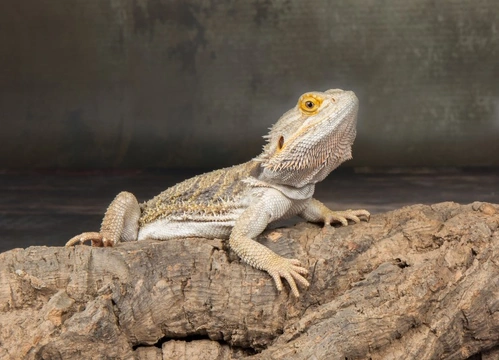
Some common bearded dragon behaviours decoded
The bearded dragon is widely considered as a good introduction to reptile keeping for novices, as they are hardier and easier to care for than many alternatives, and also, are among the most entertaining and active of reptiles too. They are popular with both first time owners and experienced reptile keepers alike, and will often become very tame, getting excited at the sight of their regular handlers and seeking out their company and attention!
However, reptiles are of course very different to mammals in terms of their natural behaviours and activities, which means that it can be challenging for their keepers to understand some of their common behaviours that are totally normal and natural for your pet!
In this article, we will provide a short run-down of some of the most common bearded dragon behaviours that you might observe, and what they mean. Read on to learn more.
Body colour changes
You should get to know your pet’s normal colour presentation and monitor it for any changes, as changes in your pet’s colour can tell you a lot about them!
A dragon that is too cold will become darker in colour, particularly around the underside and up to the base of the mouth, while a dragon that is too hot will become paler.
However, as well as colour changes due to temperature, the colour of your pet can also change due to things like stress or fear, and lines or striations in a darker colour on the belly and body may mean that your pet is unhappy or stressed, or even sick.
Beard puffing and colour changes
Your pet’s beard area can tell you a lot about them too, including when they are reaching sexual maturity and how they are feeling! If the beard area alone becomes darker, check to ensure that other areas of the body are not darkening too, as will happen if your pet is too cold. Assuming that only the beard changes, this may well indicate the onset of sexual maturity in males.
Sexually mature males will often darken their beard and/or puff out their throats in the presence of other dragons, as a threat display to other mature males, and to try to attract a female mate!
Females can and do puff up their beards sometimes too, and so this is normal as well.
Head bobbing
If you keep your dragon with others, you may well see them interacting together from time to time by bobbing or nodding their heads up and down furiously at another dragon! This is a form of dominance or threat display that both males and females can use to show other dragons that they are the boss, but this behaviour is much more common in males than females.
Very territorial dragons may even put on threat displays and bob their heads at obstacles in their tank too, if they are feeling particularly feisty!
Waving
Waving is one of the most well-known of bearded dragon behaviours, and one that is always rather entertaining to watch! However, there is a high degree of anthropomorphism involved in this, as we assume that the dragons are saying hello, when in fact, waving is a highly-loaded activity for dragons that is used to show submission or defensive fear. Waving in dragon language is a calming signal, to let the other party know that they are not a threat, and yield dominance to the other dragon.
It can most commonly be seen in younger dragons displaying to larger, older ones, or by females of breeding age to indicate to the male that they are receptive to breeding.
Leg stretching
When barded dragons are chilling out and being quiet, they will often sit with one leg, usually a hind leg, splayed out at an odd angle behind them. This activity helps the dragon to maximise the amount of their body that is in contact with the ground and so, the heat mats beneath their substrate, which helps to keep them warm and boost their circulation.
Bulging eyes
Bearded dragons have a lot of loose skin around their eyelids, and will sometimes puff up their eyelids to help to ease an annoying itch around the eyes, or relieve irritation if they have a small grain of dirt in their eyes. Dragons will also usually spend a lot of time doing this when they are getting ready to shed, as it helps to loosen their skin and make the shedding process easier for them.
This activity is totally normal, and not cause for concern.
The mouth
If your dragon is sitting around with their mouth open, this may mean that they are too hot and are trying to cool themselves down, as this serves as the equivalent of panting for dogs, allowing the effective transfer of heat from the body.
Bearded dragons also perform open-mouthed displays (and potentially, puffing up their beards as described above) as part of a threat display when faced with the presence of another dragon or potential predator, which is why you may see this happening when you approach the enclosure or put your hands in the tank.
A dragon who performs this display when you work in or around the tank is not receptive to handling, so let them calm down and try again later on.



